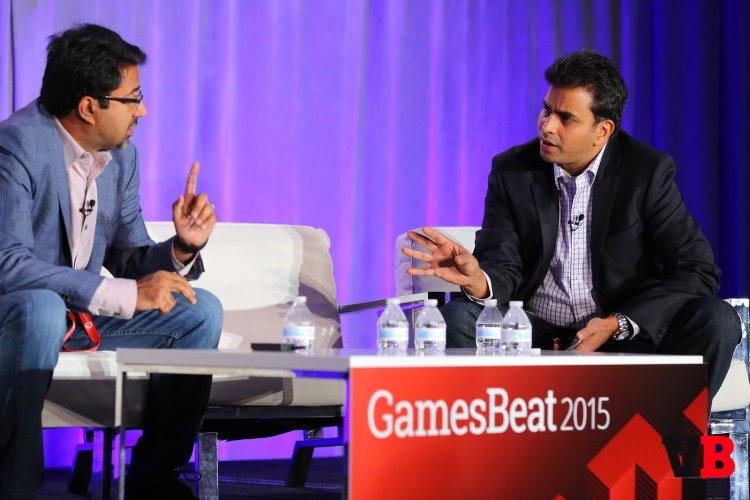SAN FRANCISCO — India is rapidly coming online as smartphones penetrate every corner of the country, and that’s going to create a market for mobile games that could, quickly, challenge both the United States and China in terms of downloads and revenue.
Every month, Indian consumers activate more than 25 million new smartphone handsets, according to Reliance Entertainment chief executive officer Amit Khanduja. The CEO, who spoke during a fireside chat at the GamesBeat 2015 conference today, explained that the Indian market could grow to 250 million total smartphones by the end of 2015. As we learned yesterday, however, Indian gamers do not spend a significant amount of money on in-app purchases. But even if Indian gamers are not worth a lot in regards to microtransactions, it’s hard to ignore 250 million people with smartphones — especially since Khanduja believes that the future will lead to finding a way to separate Indians from their rupees.
The growth in India is largely due to the country finally getting widely available connectivity. It’s getting high-speed wireless broadband with 3G speedsnow reaching 10Mbps. LTE is also coming to India later this year.
“India is where China was about five to six years ago,” said Khanduja. “But the metrics are growing five-times or six-times faster than they were in China.”
If that environment holds true for the foreseeable future, India could establish itself as a dominant market that developers from the East and West cannot ignore. And while Khanduja says the next 12 months will see developers making most of their money in India from mobile ads, he understands that game makers will need a path to generating revenue from in-app purchases. And he thinks that will happen after handset manufacturers, developers, and carriers overcome certain cultural obstacles.
“A lot of people don’t like spending money on content,” said Khanduja. “The game consumer is so used to getting everything for free. You get a preroll ad, and then you get all the content without paying for it.”
But the problem goes beyond that conditioning. Even if people did want to pay, most don’t have the means.
“Only 3 percent of Indian users have credit cards,” said Khanduja. “It’s a very cash-based economy, so carrier-billing is very important. Until that can gain penetration, we won’t see a lot of in-app purchases.”
But he says people will spend money once Apple, Google, and the carriers figure out how to provide Indian consumers with a way to buy things that fits with the way they spend their cash. In addition to carrier billing, which enables people to buy things with their phone and then pay for it on their mobile bill, Indians also use digital wallets similar to PayPal. But those services are not fully supported.
And once someone solves those problems, Khaduja says their is evidence that Indians will spend money. He notes that a big problem were the slow download speeds.
“If you look at the top games in India, they’re all crappy because they’re all 5MB games,” he said.
But he pointed to the movie-adaptation game Real Steel, which is a game that costs $1 to download and is 250MB, as an example of something that found success in India after some creative pricing.
Reliance launched Real Steel a few weeks ago for $1. Two weeks after its debut, the publisher dropped the price to 15 cents (or 10 rupees). That propelled Real Steel into the top 20 most downloaded games in the country.
Khanduja suggests this is proof that India will breakthrough as a gaming powerhouse. The country has had false starts with gaming before. About a half decade ago, entrepreneurs in the country built Internet gaming cafes — there were more than 450 of them — but they all closed about three years ago. PC hardware was too expensive for the market to keep up, and Internet speeds were too slow to play most games.
But now India has local OEMs making powerful smartphones that are as powerful as a Samsung Galaxy S5 for less than $100, and 3G and LTE will connect everyone at fast broadband speeds. This may lead to an India that is the next China.
VentureBeat's mission is to be a digital town square for technical decision-makers to gain knowledge about transformative enterprise technology and transact. Learn More

